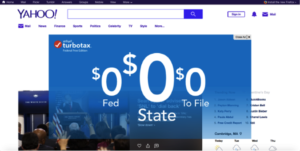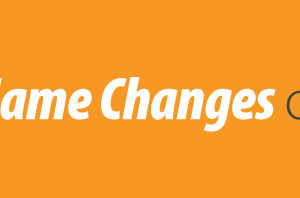
Google, Photoshop, and Skype all have something in common: their brand names are used as verbs for everyday activities. Instead of saying you’re going to video chat or that you’re going to search the internet, you’re likely going to use words like “Google” or “Skype” as verbs. While not a verb, but rather a noun, Kleenex is used in place of tissue. Creating a brand name that becomes synonymous with a verb (or other common words) is very powerful. When people think to do the activity, they automatically think of your brand. This puts you significantly ahead of your competitors in terms of recall, and as a result, the success of your business. Hubspot lists a couple of household names with one thing in common: they “verbified” their brand. They point out some important takeaways and reasons why it worked, as listed below.
YouTube
What it Replaced:
Video streaming website YouTube replaced phrases like “search for a video” or “watch a video online.”
Used in a Sentence:
“You should YouTube the latest Saturday Night Live monologue, Kate McKinnon was hilarious in it.”
Why it Caught on:
A huge part of YouTube’s widespread popularity is its first-mover advantage — it was one of the first video hosting sites ever founded, and after Google purchased it in 2006, it started growing rapidly. Today, YouTube has more than 1 billion users worldwide, and it accounts for more than 15% of all internet traffic globally.
YouTube has maintained its popularity over more than 10 years with a variety of innovative advertising techniques. Because YouTube is a subsidiary of Google, the biggest search engine in the world, it has the advantage of being one of the first search results when users conduct Google searches for videos.
Instead of only advertising YouTube online and on social media platforms, in the past several years, YouTube started advertising video creators with billboards, TV ads, and print ads to broaden its reach.
Another factor that’s played a role in YouTube’s popularization is the decline in cable TV subscriptions, especially among younger video viewers. Now that so much video content is available for free online, more viewers are heading to sites like YouTube, Netflix, and Hulu to consume videos, TV shows, and movies they enjoy.
Takeaway for Marketers:
Mix up your advertising strategies to keep exposing your brand to new audiences. A healthy blend of advertising on social media platforms, search engines, and print publications could help generate more interest and recognition of your brand.
Photoshop
What it Replaced:
Adobe Photoshop software replaced any and all terms related to photo editing and manipulation.
Used in a Sentence:
“That picture was definitely Photoshopped.”
Why it Caught on:
Like YouTube, Adobe Photoshop benefited from first-mover advantage: It was one of the first digital photo editing software programs of its kind when it was released in 1990. Because it was first on the scene, other photo editing software created later were judged against Photoshop, which helps spread word-of-mouth recognition further.
Additionally, as other Adobe software was created, the new products were integrated seamlessly with Photoshop, making it easier for designers and visual content creators to do their jobs within the Adobe Creative Suite of products. It’s easier to use a product that works well with others you need to use for your job, rather than piecing together a system that requires multiple programs and types of documents to work together.
Takeaway for Marketers:
Help make it easier for your audience to get things done during the workday. Could you integrate with larger companies, social media platforms, or APIs to make customers’ lives easier? It could be something as easy as partnering with a video hosting company to embed high-quality videos in blog posts, or providing easy links to embed social media sharing buttons on your website that could make the difference in your brand’s stickiness and popularity.
What it Replaced:
Search engine Google replaced generic terms for searching for information online.
Used in a Sentence:
“Just Google it.”
Why it Caught on:
Unlike YouTube and Photoshop, Google wasn’t among the first of its kind. There were numerous search engines already available, such as Yahoo! Search, Ask Jeeves, and AltaVista, which Google Search has since come to dominate.
Its simple homepage is easy to use and navigate and doesn’t bombard visitors with a ton of ads or images. Here’s a comparison of how Yahoo! Search and Google Search homepages appear to see what we mean. Which site would you prefer to use?
Google’s algorithm delivers arguably superior results for searchers with the help of different ranking tools and signals. Because search engine optimization (SEO) has become a must-have part of any content marketing strategy, more marketers are trying to get content to rank in Google Search. This helps searchers find the information they’re looking for faster when brands optimize website content according to how people try to find information.
Like other search engines, Google built an array of complementary apps and services, such as Gmail, Google Maps, and others. Google also made sure to do it right and launch a successful rollout of these newer products after its technology had been completely nailed. Google scaled when it was ready, which resulted in great products people loved to use and share with their friends.
Takeaway for Marketers:
Two lessons marketers can implement from Google? Design a simple, easy-to-navigate website, and don’t start scaling up too quickly. We have a guide for redesigning your website the right way here. As for the second piece of advice, don’t grow too quickly if your brand starts expanding its scope. In 2011, the Startup Genome Report determined premature scaling was one of the biggest predictors of startup failure. Make sure your primary product — software, goods, or advising — is perfected before you start growing your business further.
Skype
What it Replaced:
Video calling and chatting app Skype replaced the term “video chat.”
Used in a Sentence:
“Skype me when you’re in Europe.”
Why it Caught on:
One of the most appealing aspects of Skype is how affordable it makes an essential thing (phone calls). Skype eliminated the need for calling cards or international phones — with one app, Skype made phone calls cheaper and video calls easier.
A less scientific reason for Skype’s success is the name — it’s catchy and easy to say. Let’s face it, “make a video call” or “call someone internationally” are unwieldy to say. Skype has the advantage of having a short, pithy brand name that is easier to say than the generic term. Shorter names are also easier to remember, which likely helped Skype gain a foothold in the crowded world of messaging apps.
Takeaway for Marketers:
Marketers can learn from Skype that it’s important to have a clear value proposition for your brand’s product or service. If your brand makes something cheaper, easier, or more efficient for people, make sure your audience knows about it so they can start using it. Make the value clear and easily understood in all messaging, from your website to your social media posts.
Make a Name for Yourself
First-mover advantage, ease of use, and a good product are all important factors when verbifying your business name. Creating a quality product that becomes integral in a user’s life will result in wider adoption and the learned association of your product with a certain activity. But act early. While Google proved you don’t have to be the first, it entered the market relatively early. You’ll need to create a product that is both simple to use and useful in a unique way. Doing this may turn your business into a household name.






